What is Stitch? A stitch is a Loops or loops of one or more threads when bound with each other, either by interlacing, interloping or
Terminology Related with Different Types of Stitch in Garments
Three-term related to stitch
- Interlacing
- Interlooping
- Intralooping
Interlacing
During stitching when one loop of one thread passes over another loop of another tread is called interlacing.
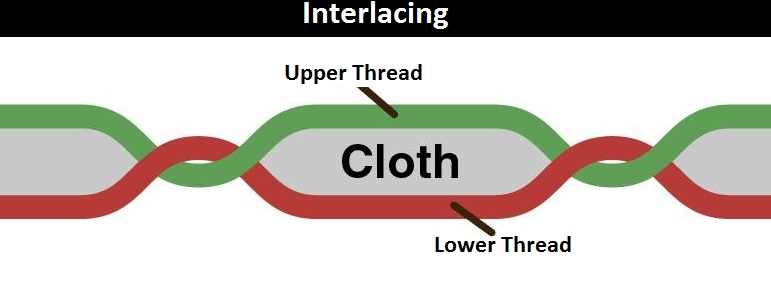
Interlooping
During stitching when a loop of one thread passes through the loop of another thread is called interloping.
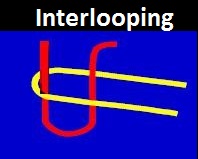
Intralooping
When a loop one thread passes through the loop of the same tread during sewing is called intra-looping.
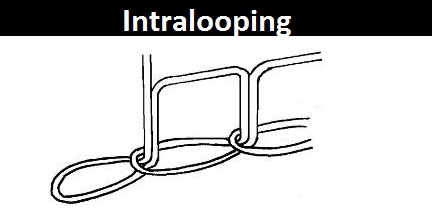
Types of Stitch Used in Garments Sewing
There are about 70 types of stitches are available and among them, 18-20 types of stitches are
British standard 3870: part1:1991 have been classified according to ISO 4915:1991 into six basic types of stitch.
- Stitch class 100: Chain stitch
- Stitch class 200: Hand stitch
- Stitch class 300: Lock stitch
- Stitch class 500: Overedge stitch
- Stitch class 600: Covering chain stitch
Stitch Class 100: Chain Stitch
- Stitches are formed by intra-looping
- Each loop is interconnected with the same thread
- There is no lower thread
- The needle carries the thread through the fabric and looper holds the thread to enter as it descends for the next stitch
- Security of stitch is very poor, in case of breakage of one stitch, it unravels very easily
- One or more needle thread is used for stitch formation
- From opposite sides, it looks different
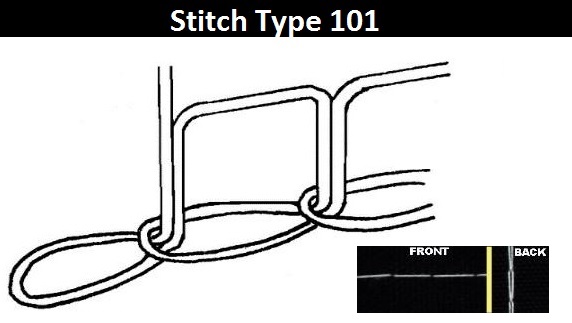
Application of Chain Stitch
- Temporary stitching (e.g. basting) or for blind stitching
- Uses for buttonholing, button attaching, hemming
Stitch Class 200: Hand Stitch
- Originally made by hand, now can be formed by machine
- Looks like domestic hand stitch
- It is produced from a single thread passed from one side of the material to the other side with each successive penetration of the needle
- This type of stitch is formed by a special type of needle and sewing machine
- The needle is double pointed with Centre eyed

Uses Hand Stitch
- The lapel of jacket, coat and expensive clothes
Lapel
A stripe of cloth is part of the front of the jacket or coat
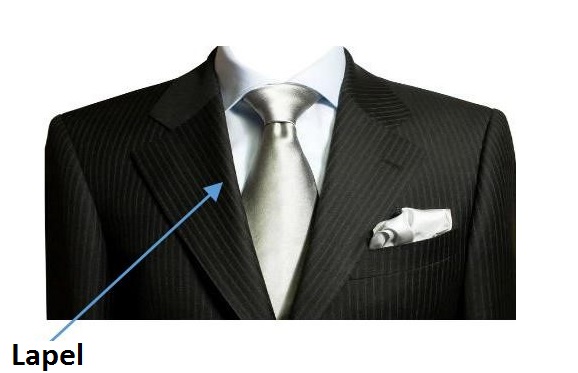
Disadvantages Hand Stitch
- Time-consuming process
- Higher cost
- Speed of sewing m\c is very slow
- Rare in use
Stitch Class 300: Lock Stitch
- Lock stitch requires at least two threads to form a stitch, a needle thread that feeds from the top & a lower thread that feeds from the bobbin.
- Needle threads are passed through the fabric & are interlaced by the bobbin threads.
- A rotary hook catches the needle threads loop as it passes around the bobbin & interlocks the two threads.
- The appearance of the lock stitch is similar in both sides of the fabric; it is a special feature.
- Fine yarn is preferable for this type of stitching.
- Stitches are secured and security of stitches can be increased by back tacking at starting and finishing ends.
- Abrasion resistance of lock stitch is better because the stitches are embedded in the fabric.
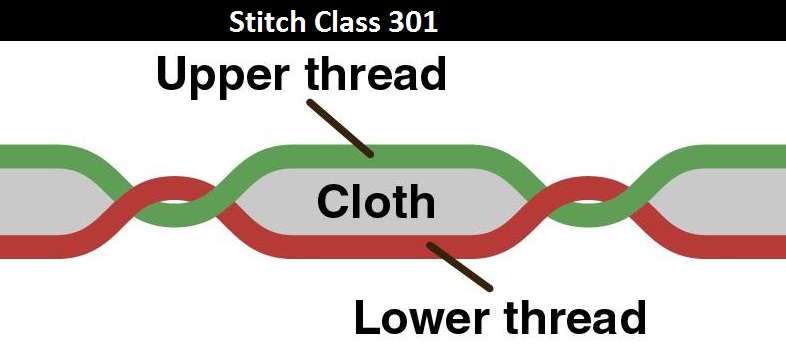
Uses of Lock Stitch
- Joining of facing, collar, pocket & other parts
- Especially for topstitching
- Both for domestic and industrial purposes
Stitch Class 400: Multi Thread Chain Stitch
- Multi-thread chain stitch requires one or more needle that
forms loops as they pass through the fabric and interloop with the looper thread on the underside - Threads are bound tighter by interlacing & inter-looping
- It looks lock stitch at the top side & double chain at the underside
- Looper thread is supplied from cone
- Need not back tacking at the starting & finishing ends.
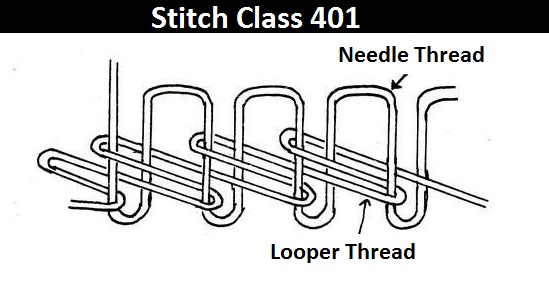
Multi-Thread Chain Types of Stitch Used in Garments
- Used for long length sewing, heavy fabric sewing such as denim, attaching lace, elastic.
Stitch Class 500: Over Edge Stitch
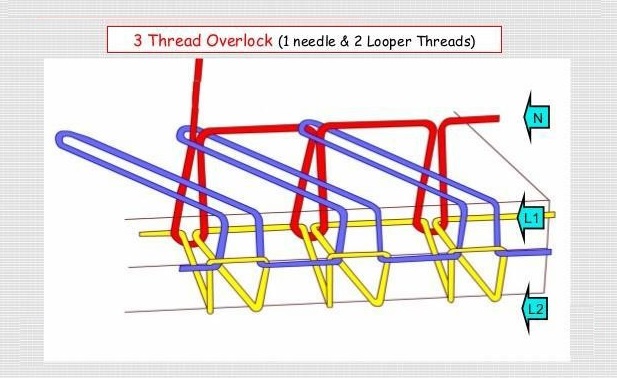
- Stitches are formed by two or more group of threads
- Formed from one or two needle threads with a looper thread
- At least one group of threads pass around the edge of the material
- Width of the fabric may vary from 3-5 mm
- Prevents the fabric from fraying
- They have high elasticity
- They cannot be unraveled easily
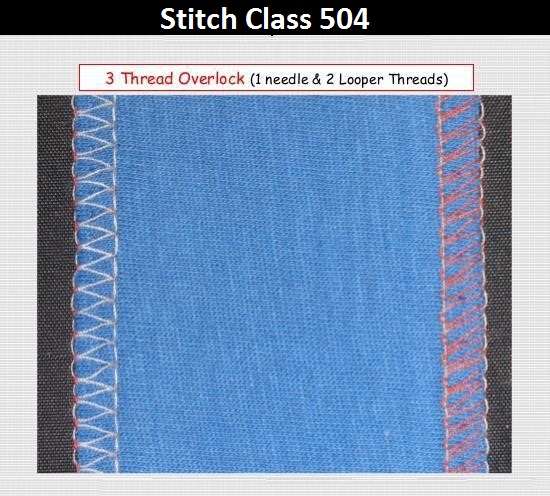
Uses of Over Edge Types of Stitch in Garments
- Widely used for knit fabric
- Used for decorative purpose
- Joining of the side seam, armhole of a shirt
- Inseam, out-seam of a pant
Stitch Class 600: Covering Chain Stitch
- Stitches are generally formed with three groups of threads
- One thread is needle thread, other is the looper thread & another is the top cover threads
- Stitches of this class are the most complex of type it may need up to 9 threads
- Covering chain stitches are often called flat lock or flat seam stitches.
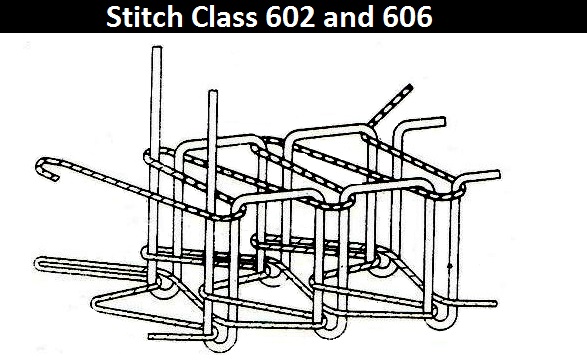
Uses of Covering Chain Stitch Types of Stitch in Garments
- Mainly used for knitted apparels
- Attaching lace, elastic, etc.
- Decorative purpose in apparels
Overall Types of Stitch in Garments (Basic Shirt)
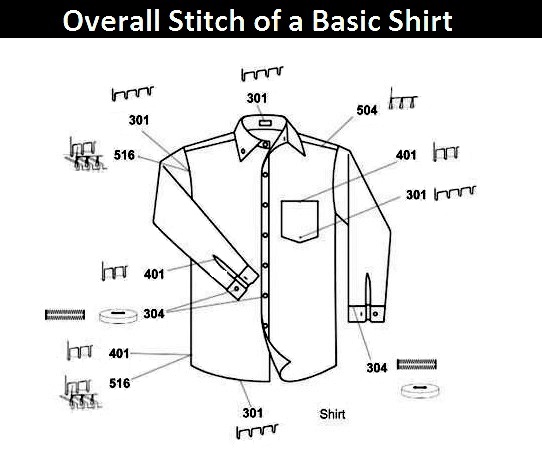
Written by
Amarta Sarkar
B.Sc. in Textile Engineering (Major in Apparel Manufacturing Technology) (BUBT)
EMBA (studying) (JnU).
Email: [email protected]

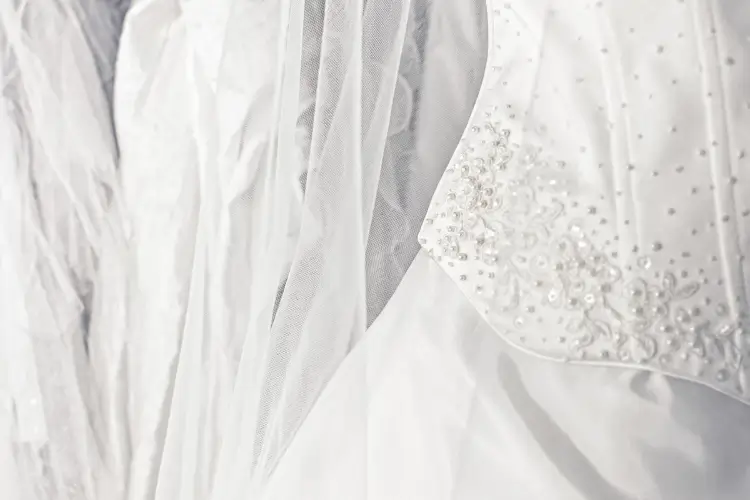
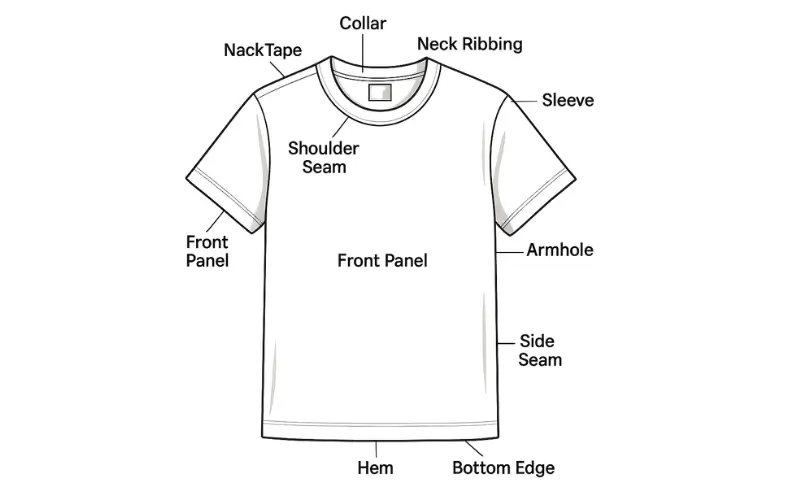

I got to know and understand many necessary things.
thanks